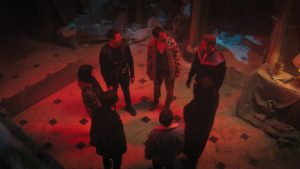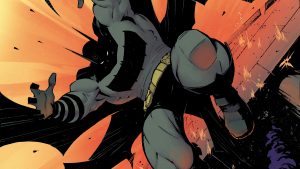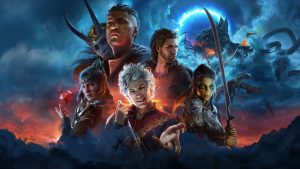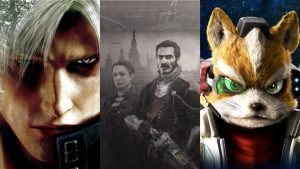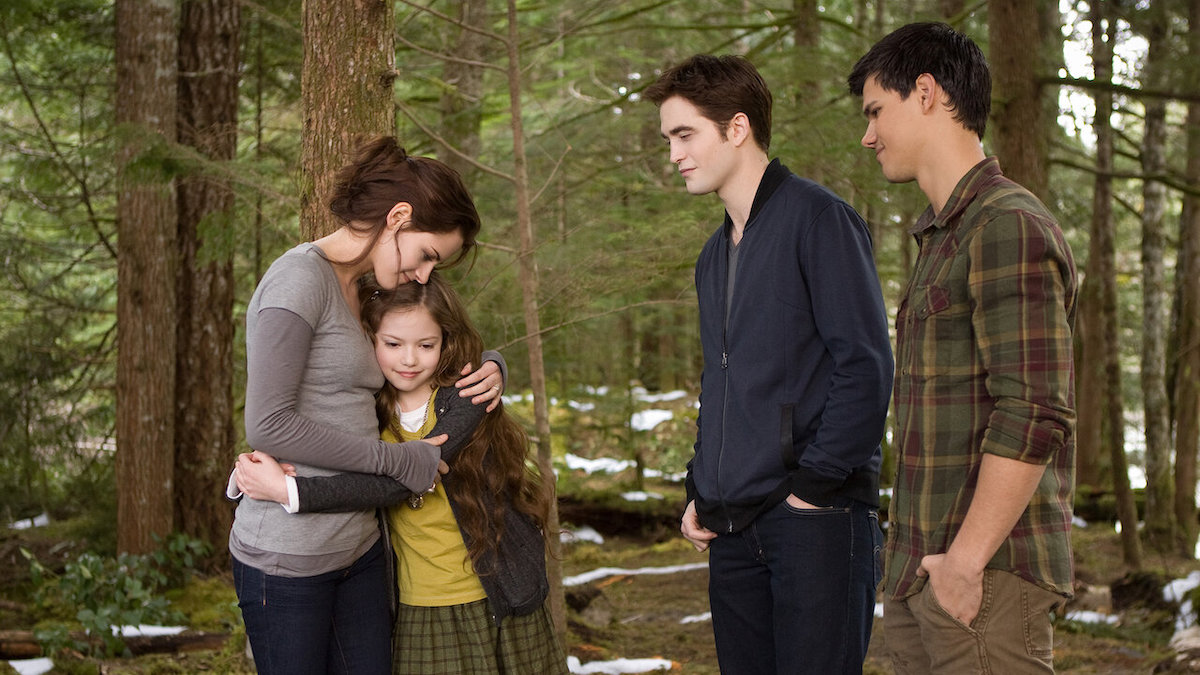
“Childhood is not birth to a certain age,” Bella Swan intones in the opening moments of The Twilight Saga: Breaking Dawn – Part 1. “The child is grown, and puts away childish things. Childhood is the kingdom where nobody dies.” Although she’s quoting 20th century American poet Edna St. Vincent Millay, Bella’s observation may very well apply to childish thoughts about the Twilight franchise too. For over a decade after the release of the final movie in the franchise, we can now admit the truth: the Twilight franchise isn’t about sparkly abstinence vampires, it isn’t about stilted dialogue or pasty, inarticulate heartthrobs.
It’s about the love between a wolf man and an infant.
To be clear, I say this not as a critique but as a praise. For all the hate that the series got throughout the period of its highest popularity, Twilight was never just the twee little girls’ stuff that its detractors claimed. The mix of monster tropes, lore-heavy world-building, and conservative sexual politics makes for a bizarre and delightful movie. That’s particularly true of the franchise’s two-part conclusion, The Twilight Saga: Breaking Dawn.
The shocking decisions in the two parts of Breaking Dawn disrupt childish assumptions about movies that inherently bad or good. These movies teach viewers to deal with a film on its own terms, and to celebrate breaks from normal structures.
The Beauty of the Bizarre
Both parts of Breaking Dawn follow the marriage of Edward Cullen and Bella Swan (Robert Pattinson and Kristen Stewart), the struggle by spurned suitor Jacob (Taylor Lautner), and Bella’s long-suffering father Charlie (Billy Burke) who must accept his daughter’s relationship with a corpse. There’s also a vampire civil war brewing over the central couple’s child Renesmee (Mackenzie Foy).
As simple as that might sound, the movies unfold in the most bizarre way possible. Charlie learns about his daughter’s marriage after the fact and, after some very reasonable grouching about losing his child to a family that sure looks like a cult, comes to accept it pretty quickly. Part Two includes an extended sequence in which all of the major characters get their heads ripped off. The series ends with a closing credit sequence that goes on for a thousand years, complete with single-card images for every single actor who had a speaking part across the entire franchise.
And then there’s the part where a wolf man falls in love with a baby. The book explains it as something non-sexual, just a handsome guy with great abs who imprints on a child and pledges his life to protect her.
But in his adaptation, director Bill Condon lets everything uncomfortable about the scene come to the forefront. It begins with Jacob burning with anger and emerging from the shadows to kill the child. Renesmee, who on the page is described as an infant with the awareness of a teenager, but onscreen appears as a CGI-nightmare—an uncanny-valley digital creation no horror movie maker could purposely create. In a flash, Jacob witnesses Renesmee’s life flash before his eyes and he drops to his knees.
To be clear, neither Condon nor the actors wink at the scene, as if they think all of this is dumb and they are above it. Rather they embrace the weirdness and let the movie be uncomfortably, and beautifully, bizarre.
Strange Acting, Not Stiff Acting
Even today, the accepted narrative on social media among genre fans is that Stewart and Pattinson became good actors after finishing the Twilight franchise. And even both actors have turned in numerous, compelling performances, including in recent films like Spencer and The Lighthouse, people still describe their takes in Twilight as vapid and clumsy.
To be fair, even a sympathetic eye can see some validity in the complaint. The first movie in the franchise calls for the actors to stare silently at one another again and again, leaving plenty of empty space to be filled (and if you’re a member of the Rifftrax team, you fill that space by asking “line?”).
However, that assumption doesn’t hold up in relation to their performances in Breaking Dawn, especially in what might be seen as the supreme moment of the series. Author Stephenie Meyer’s conservative sexual imagination gave birth to the franchise, refracting a fear and fascination with sexuality into the non-threatening monster that is the vampire Edward. So when Bella gets married early in Part One, the consummation that follows carries tremendous weight. Director Condon, an aficionado of romantic monsters, shoots Bella walking alone into her bedroom with her bed in the center of the frame, looming like a gleaming white version of the 2001 monolith.
For both the characters and the devoted audience, the pressure builds to an absurd degree. So the duo plays the scene by leaning into the absurdity, letting their characters feel every pound of the enormous pressure on them. Stewart’s Bella fondles the sheets around her bed with religious awe. Pattinson’s Edward allows an awkward laugh at his new wife, but it does not undermine the ravenous look he gives her.
Pattinson and Stewart make choices as actors to make sense of the odd material they’re handed; choices that play to the emotional truth of the scenes in all of its oddity and absurdity.
The Amazing Aro (aka Michael Sheen)
No performer in the entire franchise embodies this tendency between sincerity and strangeness better than Michael Sheen, who entered the franchise as Aro of the Volturi in The Twilight Saga: New Moon. The series frames Aro as an existential threat to Edward and Bella, especially upon learning in Breaking Dawn about their child Renesmee, who will be a vampire from birth. The marital bliss of Part One gives way to the couple defending their child against the coming of Aro in Part Two, building to a massive vampire civil war that also has wolfmen.
And yet, Sheen plays Aro not with menace but with delight—a real joy at being a classic vampire who gets to skulk around an ancient Italian castle. When vampire Irina (Maggie Grace) tells the Volturi about Renesmee, Aro almost squeals in ecstasy at what he sees. During the climactic standoff between the Cullens and the Volturi, Aro leads his velvet-clad army across a snowy-white field, with the baritones and kettle drums of Carter Burwell’s score thundering to signal the battle’s importance. But even as he plays into the archness of the conflict, Sheen never lets the smile completely slip from his lips.
More than any other part of the movie, Sheen teaches the viewers how to approach the Twilight movies. He never invites the audience to condescend to the material or to dismiss it as nonsense. Instead he embraces everything weird about the movie, barely concealing his excitement at getting to be a part of this strange and wonderful thing.
So Bizarre, It’s Good
For all of the good that Mystery Science Theater 3000 has put into the world, it also gave rise to the phrase “So bad, it’s good.” That phrase tends to suggest an adversarial position to the movie, letting the viewer feel smarter than the film by pointing out its problems. While films such as Manos: The Hands of Fate (1966) or Pod People (1983) certainly have their head-smacking issues, calling any perceived shortcomings “mistakes” suggests a clear demarcation between “correct” and “incorrect” filmmaking. The Twilight franchise undermines that assumption because it makes strong, deliberate choices and then does not back away from them.
To see the value of a movie that breaks rules, one need only look at the major franchise that picked up after Twilight’s conclusion. The Marvel Cinematic Universe operated by adhering to a strict formula with quippy heroes, pre-visualized set pieces, and teases for later entries in the franchise. For more than a decade, the formula worked, even if some started to bemoan the repetition of blue lights shooting into the sky and inconsequential villains.
Viewers have dinged The Marvels or Ant-Man and the Wasp: Quantumania for unconvincing effects and choppy storytelling, but those problems have been present in some of the MCU’s most popular movies. It’s just that people have grown tired of the formula and start to notice other problems in the series.
Contrast that to great movies that break rules or make what most would consider a mistake: the sudden cockatoo screech in Citizen Kane, the “Raindrops Keep Fallin’ On My Head” sequence in Butch Cassidy and the Sundance Kid, or the spine-chilling Winkie’s Diner scene that has nothing to do with the rest of Mulholland Drive. Each of these films makes shocking choices that any screenwriting book or CinemaSins YouTube channel would otherwise decry, but they work—sometimes because the rest of the movie is so great, and sometimes because the disruption has improved the movie.
Mature Watching of Ridiculous Movies
To be clear, none of this means that one must enjoy every movie. If you don’t enjoy a wolf man and baby love story, that’s fine. But if it brings you joy in any way, even if you’re laughing because you can’t believe a movie pitched at YA audiences includes a romance plot between a baby and a wolf man, then it is good to you.
Only immature moviegoers, who frankly don’t know much about the medium, pretend that objective rules for “good” or “bad” movies exist. They don’t trust their own feelings toward a movie and need to hide behind some preconceived dogma that has no basis in the actual craft of filmmaking. They cower behind out-of-context quotes from great directors or Dogme 95 manifestos (ignoring, of course, how even Lars von Trier gets bored of his own rules).
Sure, the laughter that follows when Jacob falls in love with Renesmee may not be what Meyer intended when she wrote the books, but it’s hard to argue that Condon and company didn’t know how weird it all was. The performances and the framing of the scenes indicate that the creators took the material seriously in all of its oddness, and our laughter comes from our response to those decisions.
In other words, only children think that they’re better than the movie they’re enjoying. And as Bella/Millay taught us, it’s time to put childish things away.
The post Stop Pretending Twilight: Breaking Dawn Isn’t Weirdly Great appeared first on Den of Geek.
